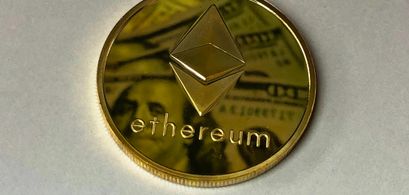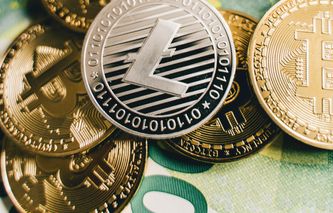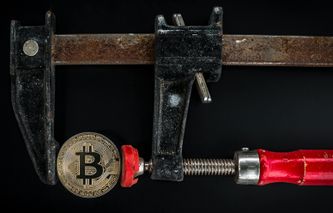Ethereum to USD: The Long View Matters
Zoom out.
In early 2016, one Ether would cost you around $1. By late 2021, the Ethereum to USD price topped $4,800. That’s not just a win, that’s wealth-generation territory.
Now in May 2025, ETH is sitting around $2,493, according to recent data.
Over the past year, it’s had its swings, from a low of $1,386.80 to a high of $4,106.96, and it’s down about 14.84% over the last 12 months.
Sounds choppy, right? But here’s the thing: this isn’t a dead asset. This is a protocol going through growing pains.
The same way tech stocks corrected after the dot-com boom, only to come back stronger, Ethereum is building through the noise.
The real story isn’t the drop from all-time highs.
It’s that Ethereum is still commanding $30.5B in daily trading volume, with a market cap over $300B. That’s not a ghost chain. That’s traffic.
Why Ethereum Still Isn’t “Old News”
Ethereum gets written off by newer investors because it’s not “pumping” like smaller-cap coins. But when you dig in, it’s clear:
It’s the base layer of Web3: from NFTs to DeFi, Ethereum is still the default.
It’s evolving: post-Merge, ETH now runs on proof-of-stake with dramatically lower energy use.
It’s resilient: it’s weathered bear markets and is still the go-to chain for serious developers.
You don’t build the future of digital finance on a meme coin. You build it on a battle-tested network with uptime, liquidity, and reach.
And Ethereum has all three.
What’s Behind the Price Right Now?
Let’s call it what it is: sideways action.
In the last few months, ETH flirted with $2,000 before spiking in early May, a healthy bounce that suggests strong buying pressure at lower levels.
The 1-year chart isn’t glowing, but it shows a range. A consolidation zone. A coil waiting to spring.
Smart money knows this isn’t the time to chase, it’s the time to position.
The fundamentals haven’t changed. If anything, they’ve gotten stronger. Ethereum staking is up. L2 adoption is growing. Institutional interest is quietly rising.
That’s not a top. That’s a base.
Ethereum Isn’t Competing with Coins, It’s Competing with Systems
Ethereum isn’t trying to be the fastest coin or the flashiest protocol. It’s aiming for something bigger: infrastructure-grade relevance.
You can already see the shift:
Banks are testing Ethereum for settlement layers.
Real-world assets are being tokenized on ETH-based networks.
Stablecoins, the gateway drug of crypto, live mostly on Ethereum.
This is about banking, investing, and the way money moves, not just trading pairs and charts.
And as regulations catch up and financial institutions dip further into the space, Ethereum is one of the few networks ready for prime time.
You don’t need to be a DeFi power user to benefit. Just holding a little ETH is like owning a piece of the internet’s next infrastructure layer.
Ethereum’s Lifestyle Play Is Quietly Underestimated
Crypto isn’t just about wealth, it’s about autonomy.
People across the U.S. aren’t turning to Ethereum just because they think it’ll 5x.
They’re doing it because it lets them hold value, move it globally, and interact with new financial tools without a middleman.
And that matters more when:
You’re tired of low yields in traditional accounts.
You want to access new investment tools.
You’re curious about assets that aren’t tied to a single economy.
This is where Ethereum quietly touches lifestyle.
It lets people bank on their own terms. It’s powering apps that reward participation, not just consumption.
And over time, it’s becoming more user-friendly, especially with the rise of L2s and simplified wallets.
This isn’t just for coders and crypto natives anymore. It’s for anyone who’s ready to explore alternatives to the status quo.
So, Is It Still Worth It?
Let’s be blunt:
If you want a quick flip, Ethereum probably isn’t your coin.
If you want high-risk, high-reward bets, there are plenty of newer chains.
But if you’re looking for something with staying power, liquidity, and real-world usage?
Ethereum still belongs in the conversation.
Here’s what to watch:
Staking growth signals user confidence.
L2 adoption, the next wave of apps will live here.
Institutional integration, slow, but real.
Every time ETH drops below $2,000, it finds buyers. That’s not luck. That’s demand.
Ethereum Still Has Room to Run
ETH isn’t done. Not even close.
The next leg up won’t look like a moonshot. It’ll look like steady growth, followed by a breakout when no one’s watching.
It might not hit $10K tomorrow.
But if you believe that blockchain isn’t a fad, and that the next era of investing, banking, and ownership is digital, then Ethereum is one of the clearest bets you can make.
You don’t need to bet the farm.
But if Ethereum isn’t at least on your radar, you’re probably playing last decade’s game.






